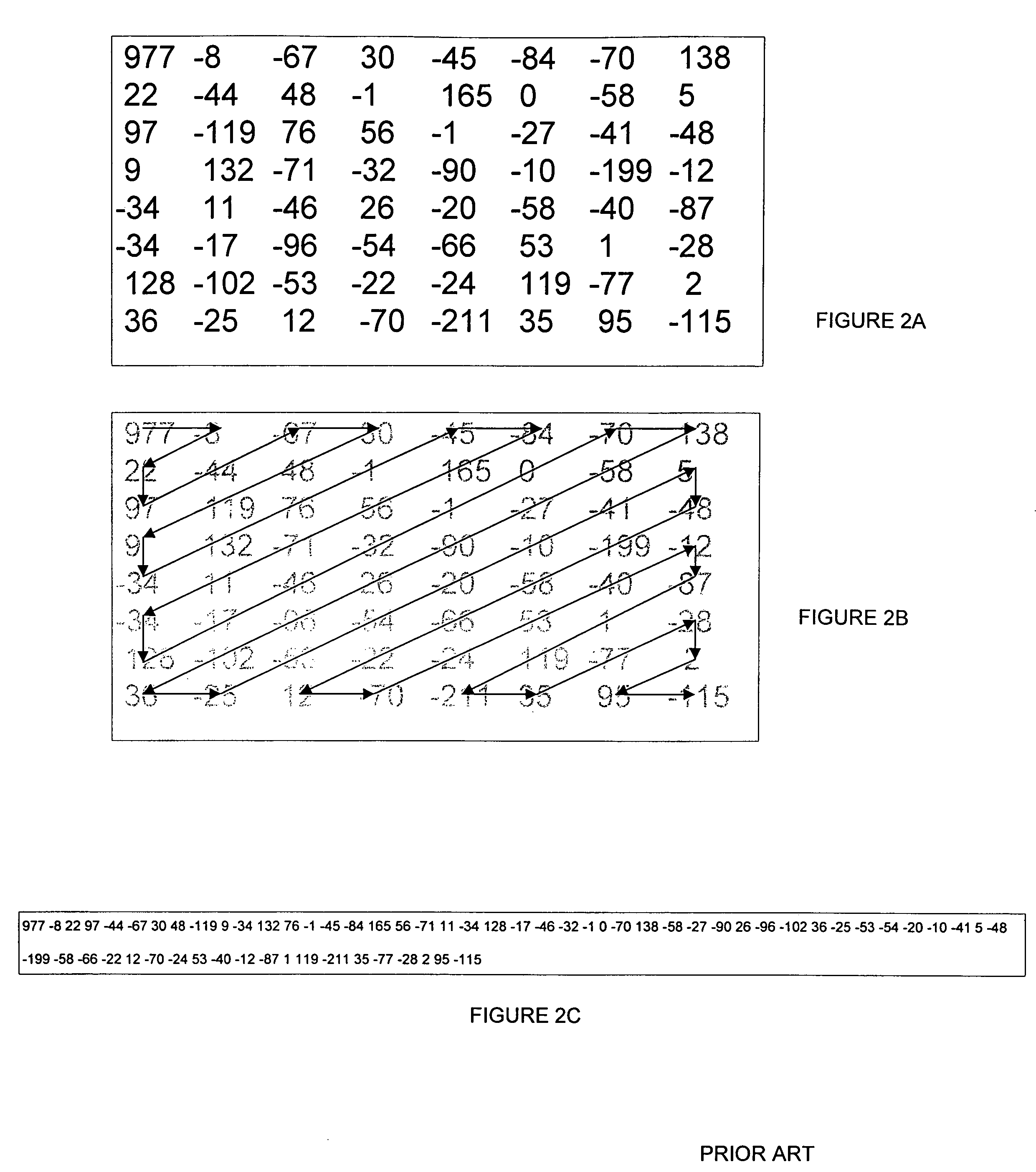Enhanced image compression utilizing Hilbert curve scanning of quantized discrete cosine transform coefficients
a discrete cosine transformation coefficient and image compression technology, applied in the field of enhanced image compression and reconstruction, can solve the problems of not necessarily preserving coefficient adjacency, not being as effective on lettering, simple cartoons, or line drawings, and not being able to achieve the effect of preserving coefficient adjacency, improving image quality of reconstructed images, and reducing image quality degradation
- Summary
- Abstract
- Description
- Claims
- Application Information
AI Technical Summary
Benefits of technology
Problems solved by technology
Method used
Image
Examples
Embodiment Construction
[0033]The present invention provides an enhanced DCT-based image compression mechanism which increases compression efficiency. In particular, the present invention provides an image compression mechanism which reorders quantized DCT coefficients in a manner which reduces jump discontinuities and preserves coefficient adjacency, resulting in more efficient block coding.
[0034]FIG. 3 depicts the exterior appearance of one embodiment of a system housing the present invention. Computer system 300 includes computer-readable storage medium, such as fixed disk drive 301, in which is stored a program for compressing and / or reconstructing image data. As shown in FIG. 3, the hardware environment can include computer system 300, display monitor 304 for displaying text and images to a user, keyboard 305 for entering text data and user commands into computer system 300, mouse 306 for pointing, selecting and manipulating objects displayed on display monitor 304, fixed disk drive 301, removable dis...
PUM
 Login to View More
Login to View More Abstract
Description
Claims
Application Information
 Login to View More
Login to View More - R&D
- Intellectual Property
- Life Sciences
- Materials
- Tech Scout
- Unparalleled Data Quality
- Higher Quality Content
- 60% Fewer Hallucinations
Browse by: Latest US Patents, China's latest patents, Technical Efficacy Thesaurus, Application Domain, Technology Topic, Popular Technical Reports.
© 2025 PatSnap. All rights reserved.Legal|Privacy policy|Modern Slavery Act Transparency Statement|Sitemap|About US| Contact US: help@patsnap.com



